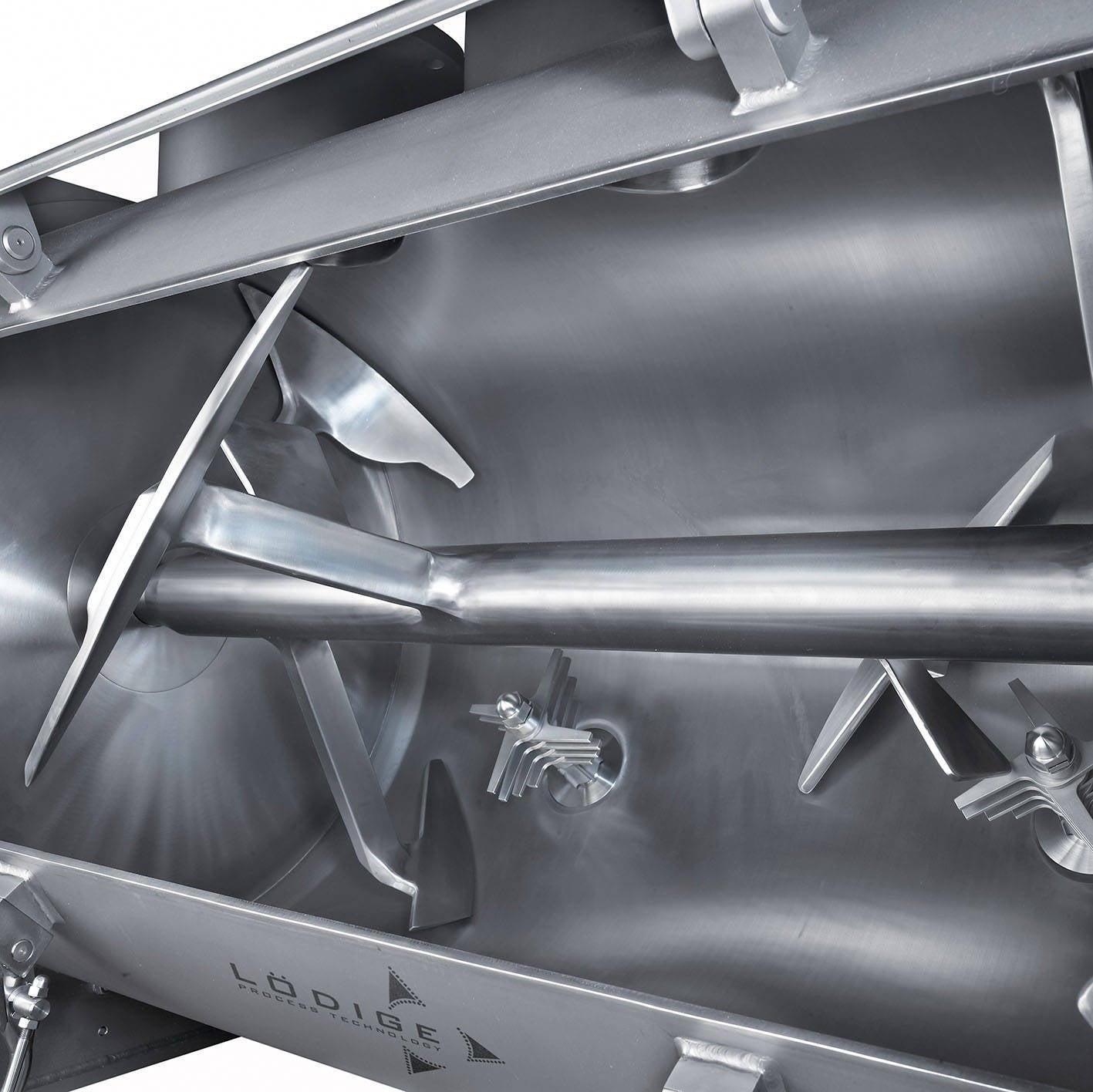
A choice of process engineering alternatives is available for coating particles. The solution realised by Lödige for processing so-called ‘crispies’ in a Ploughshare® Mixer demonstrates that complex coating tasks can be implemented by comparatively cost-effective solutions with precise control of the process parameters.
Many products only obtain their specific shape and properties once they are coated. The procedure is always used when the surface characteristics of raw products need to be modified – for instance when the raw products must be protected or the taste is to be enhanced in some way. Coating processes are mainly performed on drum coaters, fluidised bed machines or mixers.
The selection of the right process technology essentially depends on the size of the particle and structure of the product. Another deciding factor is the investment and operating costs, that depend on the added value of the product on the market. For instance, the acquisition cost of a fluidised bed machine is roughly five times higher than of a mixer. Ambitious coating tasks, however, can also be realised with a Ploughshare® Mixer that is comparatively cost-effective. A solution developed by Lödige for coating grain extrudates – so-called crispies – demonstrates the potential for using a Ploughshare® Mixer for coating solutions in the confectionery sector.
Ploughshare® Mixers operate according to the mechanically-generated fluid bed principle introduced to industrial mixing technology by Lödige. This operating principle can be described briefly as follows: Ploughshare® Shovels arranged on a shaft in a special system rotate as mixing elements in a horizontally aligned, cylindrical drum. These create a three-dimensional movement of the components to be mixed. The resulting mechanically-generated fluidised bed ensures fast, gentle and precise mixing. The separation of the particles in the fluidised bed facilitates the addition of liquids and coating of the particles. If needed, the mixing process can also be supported by high-speed rotating choppers.
Specifically, a number of criteria had to be taken into account in the development of the crispie coating machine. The shape of the product to be coated is more or less round, and it has a porous surface. The particle size varies according to grain type. Likewise, depending on the type, up to ten times the amount of liquid chocolate
and/or fat can be applied. The crunchy properties of the crispies must be preserved. The finished product is then packaged separately, e.g. as a crunchy topping for yoghurt.
The coating process in the Ploughshare® Mixer is as follows: The raw crispies are filled into the mixing drum at room temperature. An expanding fill level for the weighted sample must be ensured. The rotational speed of the mixer is adjusted to form a moderate, yet vigorous fluidised bed. The liquid chocolate and fat masses are applied to the bed via open tubes. A pump is used for dosing.
The vigorous movement of the product, together with the frequent rubbing together of the individual crispies in the fluidised bed ensures uniform distribution of the liquid mass on the surface of the crispies. The first layer coats the porous surface and creates a better bonding surface for further coating layers. To prevent the crispies from sticking together (twinning or formation of blackberry shapes), liquid nitrogen is continually injected directly into the product bed to uniformly crystallise the applied coating mass. The process and the surface appearance can also be influenced by temperature equalisation of the mixing drum below the melting temperature of the liquid mass.
The process parameters such as rotational speed, temperature, quantity of molten chocolate and fat added, as well as the amount of nitrogen per unit of time, must be adapted to the respective recipe. Batch reproducibility is ensured by adhering to the predetermined parameters.










